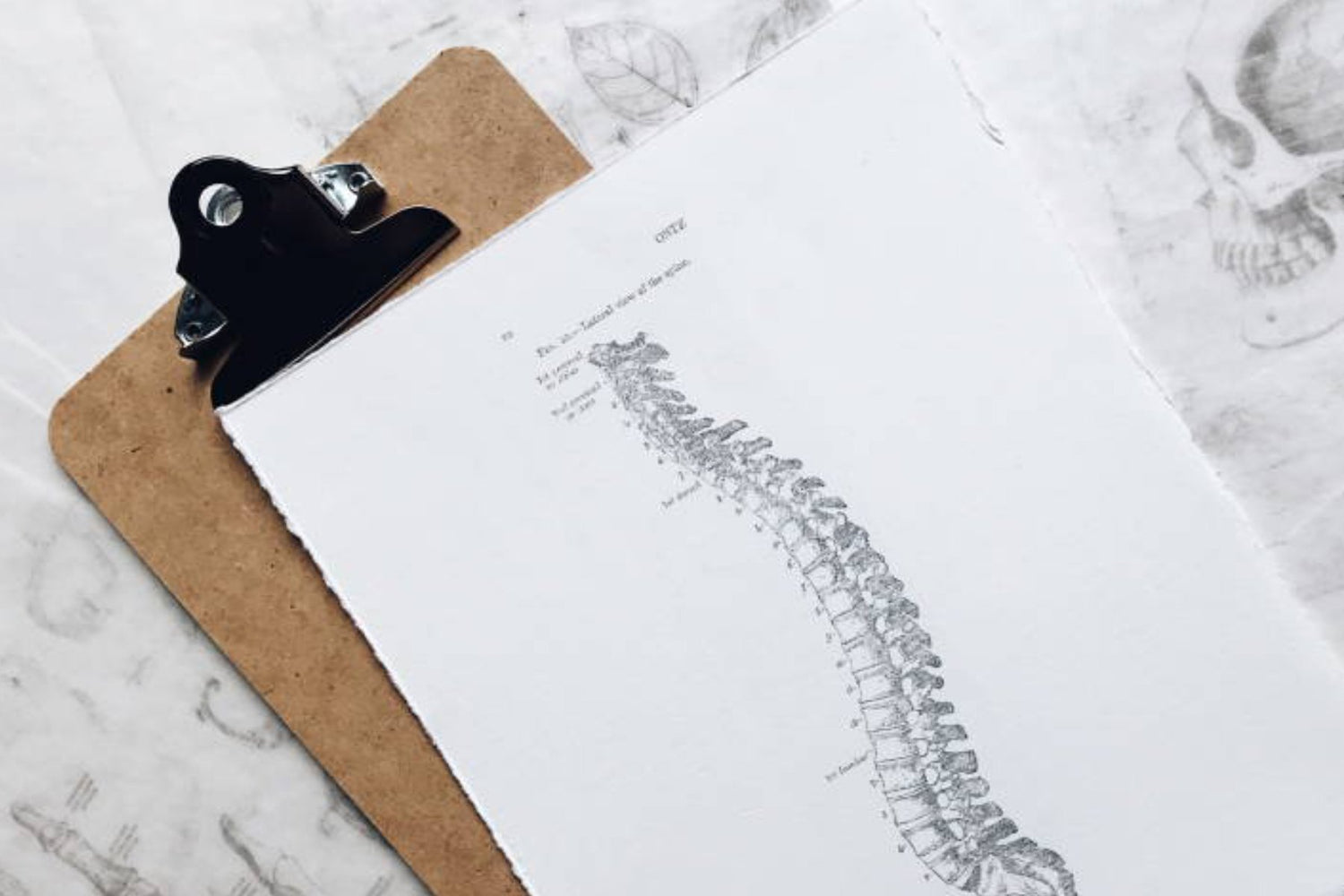Looking for the best exercises for a pinched nerve in the neck? Your search ends here. We know how frustrating, painful, and debilitating a pinched nerve can be. That's why we've compiled a guide on the best stretches and exercises for a pinched nerve in the neck so you can achieve rapid relief!
Whether you’re a professional athlete or work in an office, neck pain is extremely common. If you’re experiencing daily pain in your neck, it could be a sign of a pinched nerve. A pinched nerve is a nerve or bundle of nerves that are damaged or compressed due to a number of causes - this can lead to numbness, sharp pain, and/or a limited range of motion. If you’re experiencing any of these symptoms, it may be time to consider neck training.
We'll walk you through how neck training can help you eliminate the symptoms of this condition, and which specific exercises work best. First, though, let's go over how to diagnose pinched nerves and determine what caused the issue.
What Causes a Pinched Nerve?
A pinched nerve occurs when the root of a nerve, the part connected to the spinal cord, is injured or inflamed. This happens when surrounding tissues apply too much pressure to a nerve, whether it’s from a sudden motion or repeated actions. The most common causes of pinched nerves in the neck are:
- Constant stress: This can be caused by poor neck posture, sleeping positions, or repetitive motions that put persistent pressure on the same nerve. Your head may only weigh 10-12 pounds, but looking down at a screen can put up to 60 pounds of pressure on your neck.
- Sports: Extreme exercises can squeeze a nerve and cause unfamiliar stress. Typically, if you develop pinched nerves as a result of sports you'll feel it right away - and you'll know you tweaked something.
- Bone Spurs or Growths: Bone spurs are small, pointed outgrowths from bones. These growths can occur due to osteoarthritis or tendonitis. Sometimes, these can grow into a nerve, pinching it in place and causing chronic pain until the bone spur or growth itself is addressed.
- Narrowing Spinal Space or Degeneration of Spinal Discs: A condition called spinal stenosis can cause narrowing of space between your vertebrae, which can put pressure on your neck. Age and other factors can cause the discs between those vertebrae to break down and squeeze your nerves.
As you can see, there are quite a few causes of this uncomfortable, painful ailment. If you don't have any idea what caused yours, it's worth consulting a medical professional or seeking out physical therapy. An ounce of prevention is worth a pound of cure - so develop preventive practices so this doesn't happen again in the future. Some great preventative measures include maintaining proper positioning, eliminating sources of stress, and taking breaks from repeated physical activities. Now, with that said, let's move on to some of the best stretches for a pinched nerve in the neck.
Best Stretches For Pinched Nerve In Neck
Before we share our favorite exercises for relieving pinched nerve symptoms, we want to start with some simple stretches. Of course, we encourage you to consult your doctor before beginning these pinched nerve neck stretches to determine if they’re right for you. Once you receive clearance, take the time to closely study the technique of these stretches. The last thing you want is to do more harm than good. With that said, here are the best stretches for a pinched nerve in the neck - and how to perform them.
- Trap Stretch: This targets your trapezius muscles, located in the back of your neck. Place your right hand under your thigh, and use your left hand to gently bend your head to the left side. Repeat three times for each side, taking 30-second pauses in between.
- Neck Tilt/Chin Tuck: You may already perform this neck stretch without even realizing it. While sitting, tilt your head down and bring your chin to your chest for five seconds. Return to the starting position and repeat five times.
- Head Turn: Begin by looking straight ahead and then slowly turn your head to the right. Hold the position for 5 to 10 seconds. Slowly turn your head to the left, and hold for 5 to 10 seconds.
On their own, these stretches work wonders. However, you may want to take things a step further to really relieve pain. If so, consider performing some of these exercises for a pinched nerve in the neck.
The Best Exercises For A Pinched Nerve In The Neck
Aside from simple stretches, there are exercises for a pinched nerve in the neck or shoulder to further your neck training. Neck exercises for pinched nerves are powerful prevention tools that strengthen muscles and promote blood circulation. Even if you don't currently have any pinched nerve pain, performing these exercises is a great idea. You can prevent the chance of developing pain or injury in the future.
Maintaining a strong neck makes your nerves more resistant to pressure from other tissues. The following exercises for neck and shoulder pain for a pinched nerve also promote a wider range of motion, which will prevent injuries due to unfamiliar or extreme movements.
Exercises for a Pinched Nerve in your Neck and Shoulders
- Shoulder Shrugs: While standing and keeping both arms at your sides, roll your shoulders backward 15 times. Take a 30-second break before doing the same in a forward motion.
- Swimming: Make sure to stretch before swimming, and rely on strokes that don’t cause pain. Swimming promotes a full range of upper body motion while remaining low-impact.
- Walking: This should be done for 15 to 30 minutes at a leisurely pace. Make sure to maintain good posture and take breaks when needed.
As with the neck stretches for a pinched nerve, each exercise for a pinched nerve in the neck should not be painful. It’s imperative to maintain proper positioning while exercising or stretching. And because of that, we recommend you do all your neck exercises with the help of the #1 neck exercises machine online: The Iron Neck.
How The Iron Neck Helps You Build A Stronger, More Resistant Neck
The Iron Neck holds your head and neck in place as you perform each rep, providing both stability and resistance. By also allowing multi-directional motion, the Iron Neck is perfect for preventing pinched nerves.
Using the Iron Neck as part of your training can prevent more significant injuries as well. By strengthening your muscles, the Iron Neck helps combat concussions and whiplash. From football players to MMA fighters and boxers, athletes trust the Iron Neck with training some of their most crucial muscles. There is a reason you'll find an Iron Neck device in the leading physical therapy centers around the globe. Experience the difference yourself and you'll never look at neck training the same!
Final Thoughts The Best Exercises For A Pinched Nerve In The Neck
Now that you know more about how to relieve pain from a pinched nerve, you can start to implement the tactics we've shared in this article. You've learned the best stretches for a pinched nerve in the neck along with the best exercises for a pinched nerve in the neck. At this point, there is just one thing left to do - get your Iron Neck today to supercharge your training and built a bulletproof neck. Or, if you want to start smaller on a budget, grab yourself a neck weight harness and resistance band straps.
If you want to learn more about strengthening your neck, we have an article discussing the best neck exercises in general. This resource is perfect for those who are new to neck training. While you're at it, take a look at our breakdown of how much weight to start neck training with - this is important for keeping yourself safe as you dive into this new form of training. We also have some great mental cues when neck training that can help you master these movements to get the most out of them.


